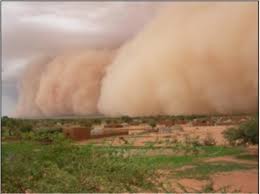So much dust is scattered across the planet by the winds of the Sahara that it alters the climate. However, the emission and transport of this dust, which can reach the poles, fluctuate considerably. Although many hypotheses have been put forward to explain this phenomenon, no unambiguous relationship between this dust and the climate had been established until now. According to research carried out by a French-US team of researchers from LATMOS1(CNRS/UVSQ/UPMC), CNRM2(CNRS/Météo-France) and SIO3, meteorological events such as El Niño and rainfall in the Sahel have an impact on dust emission, by accelerating a Saharan wind downstream of the main mountain massifs of Northwest Africa. The scientists have also developed a new predictive model showing that emissions of Saharan dust will decline over the next hundred years. Their work is published in the 24 March 2016 issue of the journal Nature.
The Sahara desert emits more dust than any other desert in the world. More than half of the dust deposited in the oceans originates in North Africa. This Saharan dust affects the climate: among other things, it contains nutrients that fertilize both land and water, it blocks or reflects sunlight, and it affects the formation of clouds and hurricanes. The dust consists mainly of aerosols measuring between 0.1 and 20 microns, which remain windborne until they are deposited by their weight or by rainfall.

